Adjustable Rate Mortgages
What are Adjustable Rate Mortgages you ask? Let’s cover the basics first,
In the world of lending and borrowing, there is an extensive amount of information that must be absorbed in order for real estate buyers and sellers to understand and make it through the process without a scratch. As a seller of real estate, one has to hope that the potential buyer is capable of attaining financing and receiving that notorious letter of acceptance from the bank or else the deal falls through. Buyers have the real job-finding a lender that will offer the best payment plan with the best interest rate possible, because even a single percent lower on a rate can save a buyer thousands of dollars over the years of the note. So when a buyer sets out to figure out how they want to tackle this feat, they approach the lenders and realize that there are options when it comes to a home mortgage loan.
One of the options that a lender will present to a potential real estate buyer is the Adjustable Rate Mortgage, often called an ARM. Some individuals consider this route of financing risky as the interest rate could rise, while others find it a convenient way to get into a low rate mortgage early with the option of future refinancing. ARMs dictate a periodically changing interest rate through the life of the loan, usually based on the prime rate in the financial index. As stated previously, the golden ticket in this type of loan is the fact that the ARM usually begins with a lower interest rate than a standard fixed rate mortgage. This feature is designed to attract borrowers who may not otherwise apply for financing.
A low beginning interest rate can save the buyer thousands of dollars in the first years of the note, and the major point of the ARM loan is the fact that it has the ability to stay lower than other loans over time if rates stay low or decrease through the years. The cons side of an ARM is the elevated risk level. Remember, this is an “adjustable” rate mortgage, meaning the rate can stay low, but it can easily rise if normal interest rates begin to head up. Often, on some ARM loans, the initial interest rate is good for only the first year before being adjusted, so it’s vital to everyone that this be understood in the beginning. A good ARM will have a cap on the interest rate increase from period to period (and all have a ceiling on rate increases over the life of the loan), which limits the levels of risk for the borrower.
On the other hand, a Fixed Rate Mortgage features an interest rate that is unchanging and ensures the payment never changes. A 30 year fixed rate is the most common note, though 15 and 20 are often written in the interest of an earlier payoff. Though a fixed rate loan may have a slightly higher interest rate than an ARM, the key benefit is that this type of loan offers stability and regular predictable payments over the years with no surprises. Fixed rate mortgages are the best choice for buyers who plan to live in the property long term, possibly throughout the life of the note and if their income stays the same (or increases). Some people simply need the peace of mind that their payments are always consistent and unchanging.
When a borrower is considering the type of loan they need to acquire from a lender, there are some important questions that must be addressed before a decision is met. The borrower must have an idea how long they plan to own their home, must have a good outline of other financial obligations that could affect payment methods (with the understanding that these obligations usually increase), and if and when interest rates do rise, will the income rise with it to sufficiently cover the higher payments? If some of the answers to these questions are shaky and uncertain, or a buyer plans to definitely stay in the new property long-term, then it’s likely that they will go with a good 20 or 30 year fixed rate mortgage.



